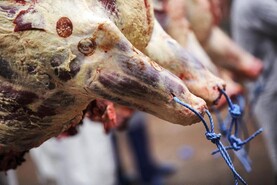Irish beef exports to South Korea were given a high profile launch by Agriculture Minister Charlie McConalogue and Minister of State Martin Heydon last week, during the trade mission they led to China and South Korea. In the press communication, Minister McConalogue referred to his confidence in Irish beef exceeding Korean consumer expectations and Minister of State Heydon referred to the Korean market presenting a “fantastic opportunity for our beef sector”. The Bord Bia chief executive Jim O’Toole spoke of international markets such as South Korea as “the important third leg of the stool for Irish beef exports”.
Expectations not always met
We have been here before. Back at the end of 2013, then Taoiseach Enda Kenny and Simon Coveney, who was the Agriculture Minister at the time, announced the reopening of Japan for Irish beef exports at a press conference with the Japanese prime minister. Bord Bia estimated the value of the market to be worth between €12m and €15m in the short- to medium-term, with potential for significant expansion over time. In 2023, Irish beef exports to Japan were worth €5.6m, according to Bord Bia export data.
There was a high-profile launch for Irish beef in the US when access was secured in 2015. Then Agriculture Minister Simon Coveney projecting it as having potential for 20,000t of Irish beef exports, worth €100m. This was considered very optimistic by the industry at the time – Bord Bia had referred to it as 2,000t market initially, and while it did climb to almost 10,000t in 2020, in 2023 Bord Bia figures show that just 1,362t of Irish beef was exported to the US.
Exports to China were launched in 2018 and for a time it looked that the business would prosper, with over 10,000t exported in 2019, the first full year of trading. Unfortunately, there was a sudden stop following a BSE case in May 2020 and business has been stop-start ever since.
South Korea
So can South Korea be the market that significantly strengthens the third leg of the beef export stool that Bord Bia refers to? As Figure 1 shows, it has grown to a 480,000t market for imported beef in 2023.
What’s more, it is particularly dependent on imported beef, as domestic production meeting well under half of total demand.
South Korea now imports twice as much beef as it did in 2007, but it should be noted that most of the growth was in the decade between 2010 and 2019, with much slower growth since then.
The US is the preferred supplier, accounting for 249,000t of imports in 2023, with Australia supplying 189,000t. Between them, they have over 90% of the market for imported beef, with Canada and New Zealand making up a large part of the remaining 42,000t imported in 2023.
Irish exporters didn’t have access to the market during the decade of rapid growth which would have been the best time to break into the market and build market share without displacing existing suppliers. That is why China was such an exciting prospect back in 2018, as it was the middle of their rapid expansion of beef imports.
Their market for imported beef passed 1m tonnes in 2018 for the first time, having grown from just a few thousand tonnes in 2012. As Figure 2 shows, it has kept growing since, reaching 2.7m tonnes in 2023 and is forecast to increase again this year even if the rate of growth has slowed down. Unfortunately, BSE caused two disruptions when Irish exports were getting going and that market is now crowded as Irish exporters recommenced trade earlier this year.
Building export markets is very much a two phase process. Getting permission or market access is what the Government has to deliver and that is what has been done over the past decade for the China, the US, Japan, and now South Korea, the four largest beef importing countries in the world.
This is a slow and difficult process driven by officials behind the scene with political push being delivered when appropriate. When there is success, politicians naturally will want to be centre stage, but the reality is that this is when the real work of building markets begins. Experience has shown there has been a tendency to over hype these markets for Irish beef exports over the past decade and Ireland exported 93% of its beef to the UK and EU 2023 despite the opening of these major beef import markets. This isn’t to diminish the importance of the work in opening new markets, it is absolutely vital that our exporters have the broadest range of markets possible available in which to sell Irish beef. It is also essential that Bord Bia keeps working in these markets that aren’t immediately lucrative to traders to ensure we are in a position to strike should an opportunity arise at a future date to build meaningful business. A “slow burn” market is still well worth having, but it is important to put its value in context for farmers that are currently filling their sheds with cattle to feed over the coming months.






 This is a subscriber-only article
This is a subscriber-only article










SHARING OPTIONS: